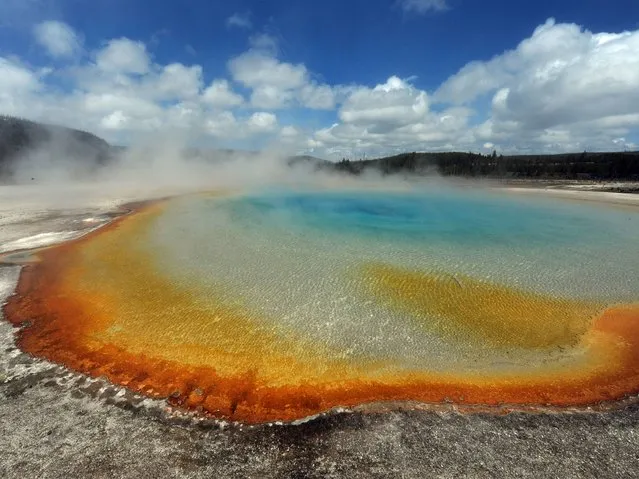
View of the “Sunset Lake” hot spring with it's unique colors caused by brown, orange and yellow algae-like bacteria called Thermophiles, that thrive in the cooling water turning the vivid aqua-blues to a murkier greenish brown, in the Yellowstone National Park, Wyoming on June 1, 2011. Yellowstone National Park, was established by the U.S. Congress and signed into law by President Grant on March 1, 1872. The park is located primarily in the U.S. state of Wyoming, though it also extends into Montana and Idaho and was the first national park in the world. It is known for its wildlife and its many geothermal features, especially the Old Faithful Geyser. (Photo by Mark Ralston/AFP Photo)
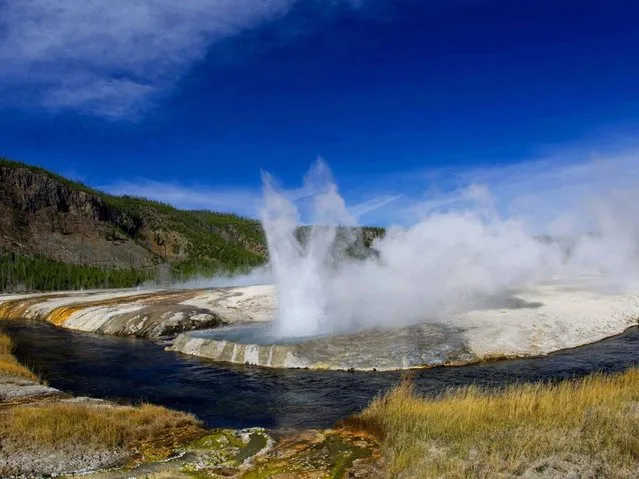
Cliff Geyser along Iron Creek in the Black Sand Basin is seen October 8, 2012 in Yellowstone National Park in Wyoming. The geyser formed a rim or wall-like ridge of sinter around its crater from which it erupts 30 to 40 feet high. Yellowstone protects 10,000 or so geysers, mudpots, steamvents, and hot springs. (Photo by Karen Bleier/AFP Photo)
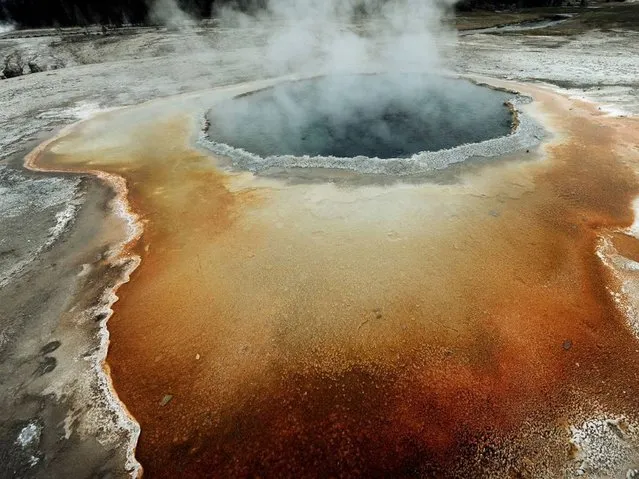
View of the “Crested Pool” hot spring with it's unique colors caused by brown, orange and yellow algae-like bacteria that thrive in the cooling water, turning the vivid aqua-blue to a murkier greenish brown, in the Yellowstone National Park. (Photo by Mark Ralston/AFP Photo)
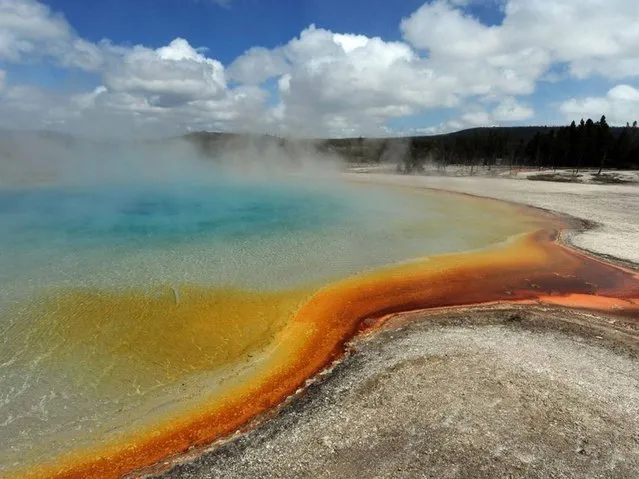
View of the “Sunset Lake” hot spring with it's unique colors caused by brown, orange and yellow algae-like bacteria called Thermophiles, that thrive in the cooling water turning the vivid aqua-blues to a murkier greenish brown, in the Yellowstone National Park, Wyoming in 2011. (Photo by Mark Ralston/AFP Photo)
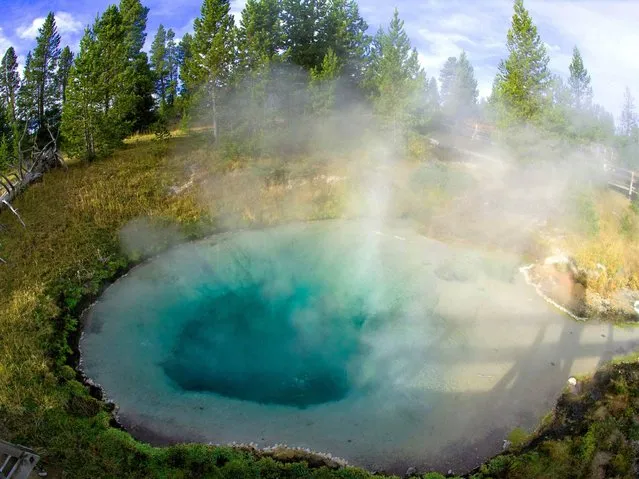
Yellowstone protects 10,000 or so geysers, mudpots, steamvents, and hot springs. (Photo by Karen Bleier/AFP Photo)
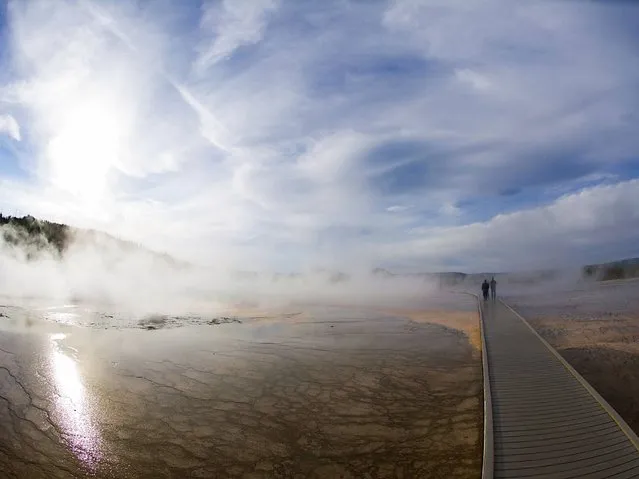
Tourists stroll on a steamy boardwalk at Midway Geyser Basin in Yellowstone National Park in Wyoming. (Photo by Karen Bleier/AFP Photo)
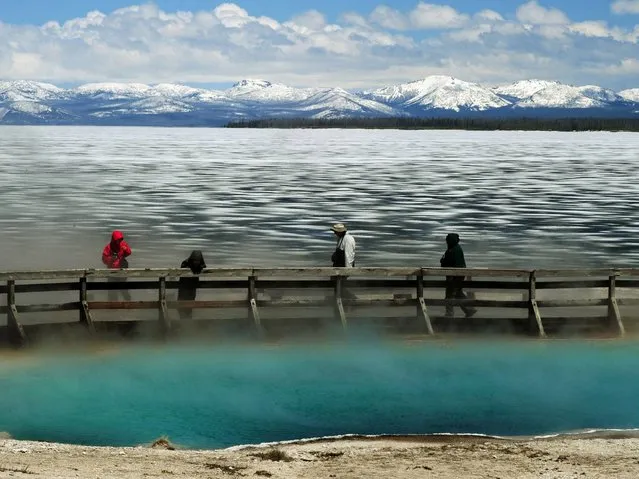
Tourists walk beside a hot spring and the partially frozen Yellowstone Lake at the West Thumb Geyser Basin in the Yellowstone National Park. (Photo by Mark Ralston/AFP Photo)
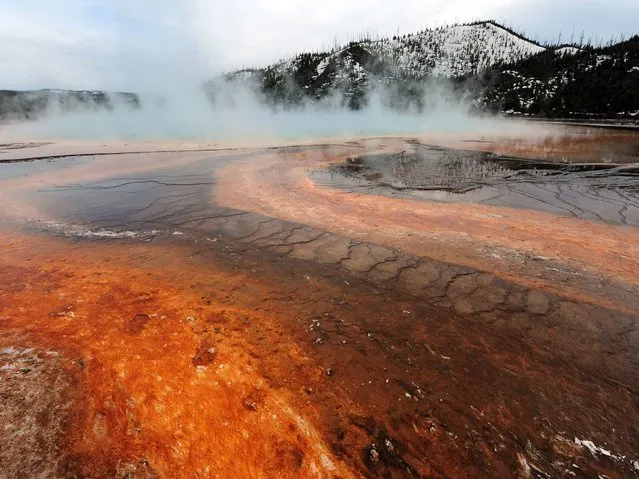
View of the “Grand Prismatic” hot spring with it's unique colors caused by brown, orange and yellow algae-like bacteria called Thermophiles, that thrive in the cooling water turning the vivid aqua-blue to a murkier greenish brown in the Yellowstone National Park. (Photo by Mark Ralston/AFP Photo)
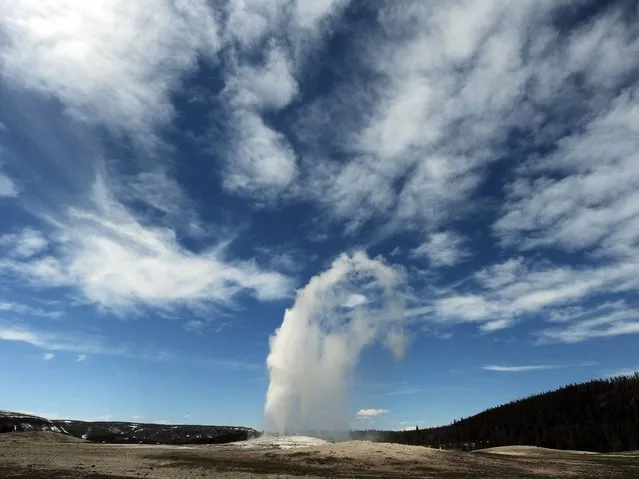
“Old Faithful” geyser erupts on average every 90 minutes in the Yellowstone National Park. (Photo by Mark Ralston/AFP Photo)
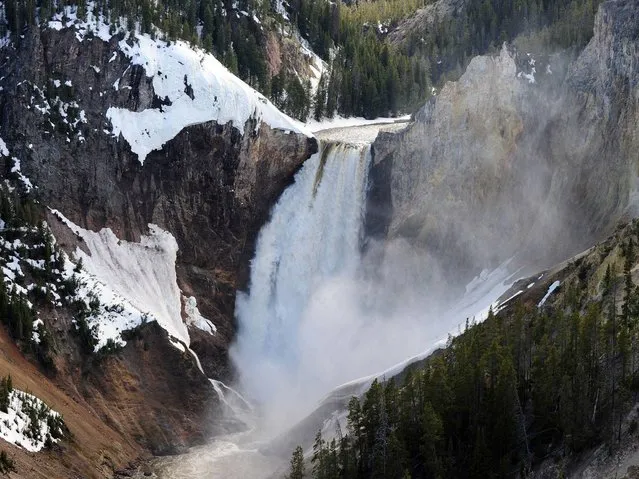
“Lower Falls” at the Yellowstone Grand Canyon in the Yellowstone National Park. (Photo by Mark Ralston/AFP Photo)
06 Apr 2014 08:02:00,
post received
0 comments
